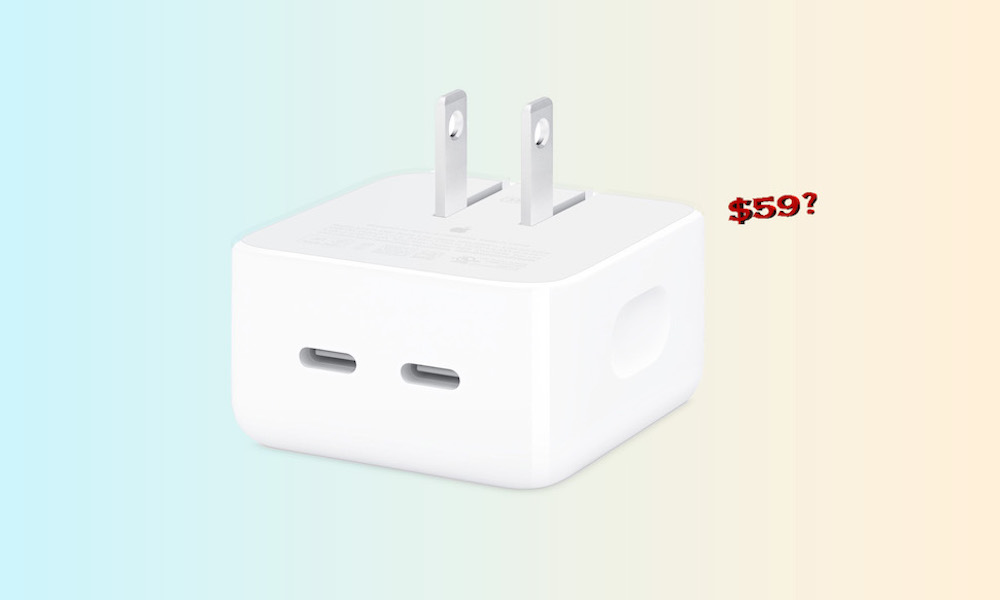FAQ | Is Apple’s New 35W Dual USB-C Charger Worth It?
 Credit: Apple
Credit: Apple
Toggle Dark Mode
During its Worldwide Developers Conference (WWDC) earlier this month, Apple quietly revealed a new 35W Dual USB-C charger, confirming last month’s rumors of its impending release.
However, the new adapter didn’t arrive quite as anybody had expected. Rather than being sold primarily as a new standalone accessory, Apple bundled it with the new M2 MacBook Air.
Like just about any Apple power adapter, you can still purchase the new 35W Dual USB-C Port Power Adapter separately, but if you’re planning on picking up anything more than the base model of the M2 MacBook Air next month, you’ll find one of the new power adapters in the box. The entry-level MacBook Air, with the 8-core GPU, only includes a single-port 30W adapter.
Interestingly, even though the new M2 MacBook Air won’t likely arrive until next month, Apple began selling the new dual-port charger on Friday alongside the new M2 MacBook Pro.
That’s more of a coincidence than anything else, as the new charger isn’t suitable for the higher-powered MacBook. All 13-inch M2 MacBook Pro configurations come with a single-port 67W USB-C power adapter — nearly double the power output of Apple’s new 35W dual-port charger.
Nevertheless, if you’re looking for an Apple-style USB-C power adapter that can charge more than one device at a time, this new accessory might be worth a look. However, now that it’s out, Apple has also released a support document explaining how it works — and there are a couple of catches that might make you want to consider looking elsewhere.
Like most multi-port chargers, the 35-watt rating on Apple’s adapter reflects the total power output across both ports. In other words, if you’re charging more than one device, that power has to be shared between them.
However, Apple’s adapter does this in a particular way. There’s not much intelligent power management here. If you plug in two devices, it will split the power output evenly in most cases.
In other words, each device will get 17.5W of charging power. The only exception is connecting devices with significantly lower power demands, such as a set of AirPods or an Apple Watch. Here’s how Apple explains it:
- If you connect a Mac notebook and an iPhone or iPad, each device receives up to 17.5W.
- If you connect an iPhone and an iPad, each device receives up to 17.5W.
- If you connect a Mac notebook or iPhone and an Apple Watch or AirPods, the Mac notebook or iPhone receives up to 27.5W and the Apple Watch or AirPods receive up to 7.5W.
No matter how you slice it, charging a Mac, iPhone, or iPad together will not provide the fastest possible charging for those devices. An iPhone or iPad won’t suffer as much as a Mac since most iPhone models cap out at around 20–22W. The iPhone 13 Pro Max can charge at speeds of up to 27W, but it’s the outlier.
Technically, Apple is shortchanging M2 MacBook Air buyers on the fastest possible charging speeds. The newest MacBook will support much faster charging with a 67W power adapter, but you’ll have to buy that adapter separately. That’s not as bad as it sounds, though; most people don’t need fast charging for a MacBook that offers 15 hours of battery life, and faster charging shortens your battery’s lifespan.
On the other hand, sharing the 35W charger with an iPhone or iPad will likely leave you with just enough juice to keep the MacBook Air battery from draining while you’re using the computer. It’s not a bad way to keep a second device topped up if you’re buying a new MacBook Air and get the adapter in the box anyway, but we wouldn’t recommend buying it on its own; you can do much better with third-party options in the same price range.







